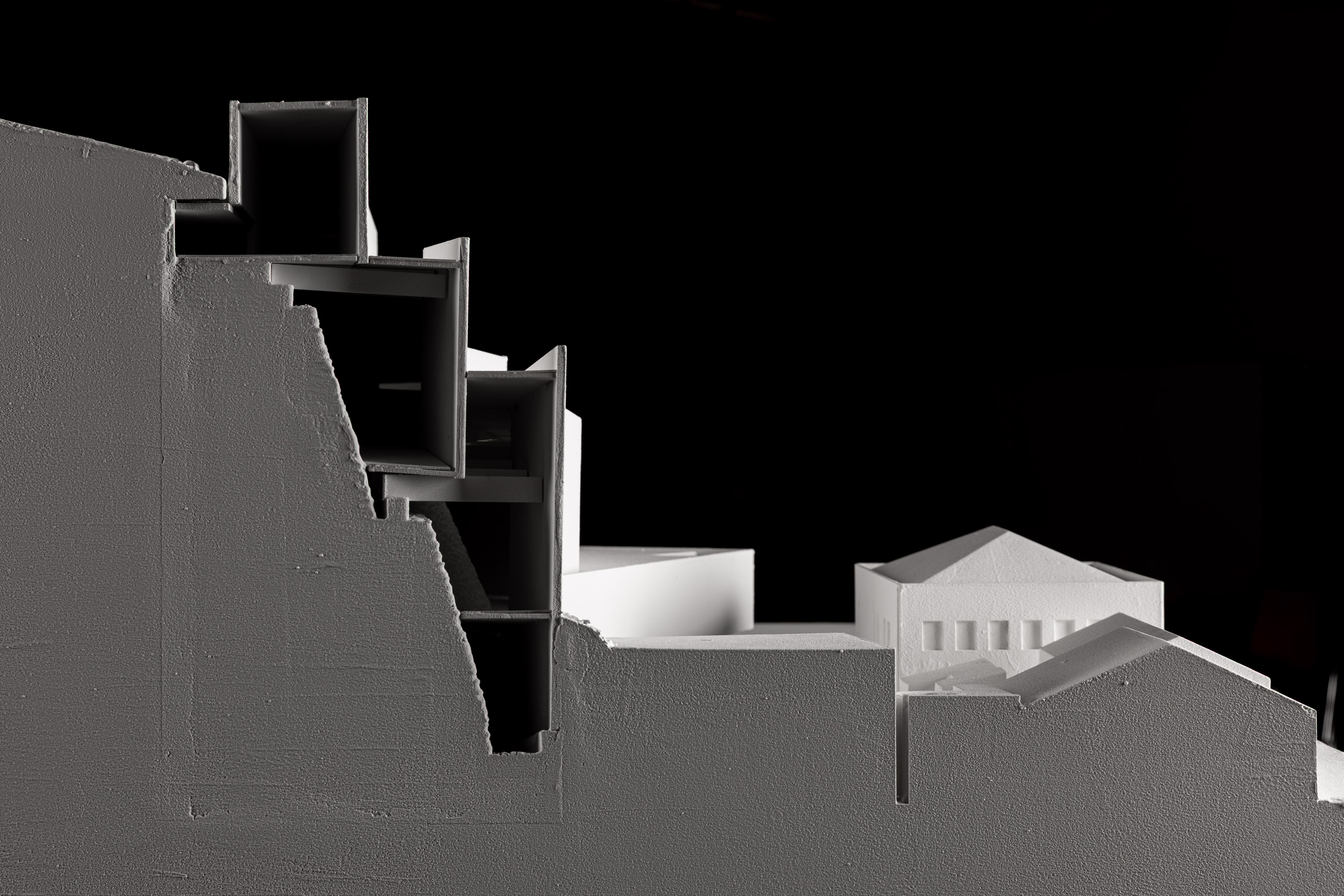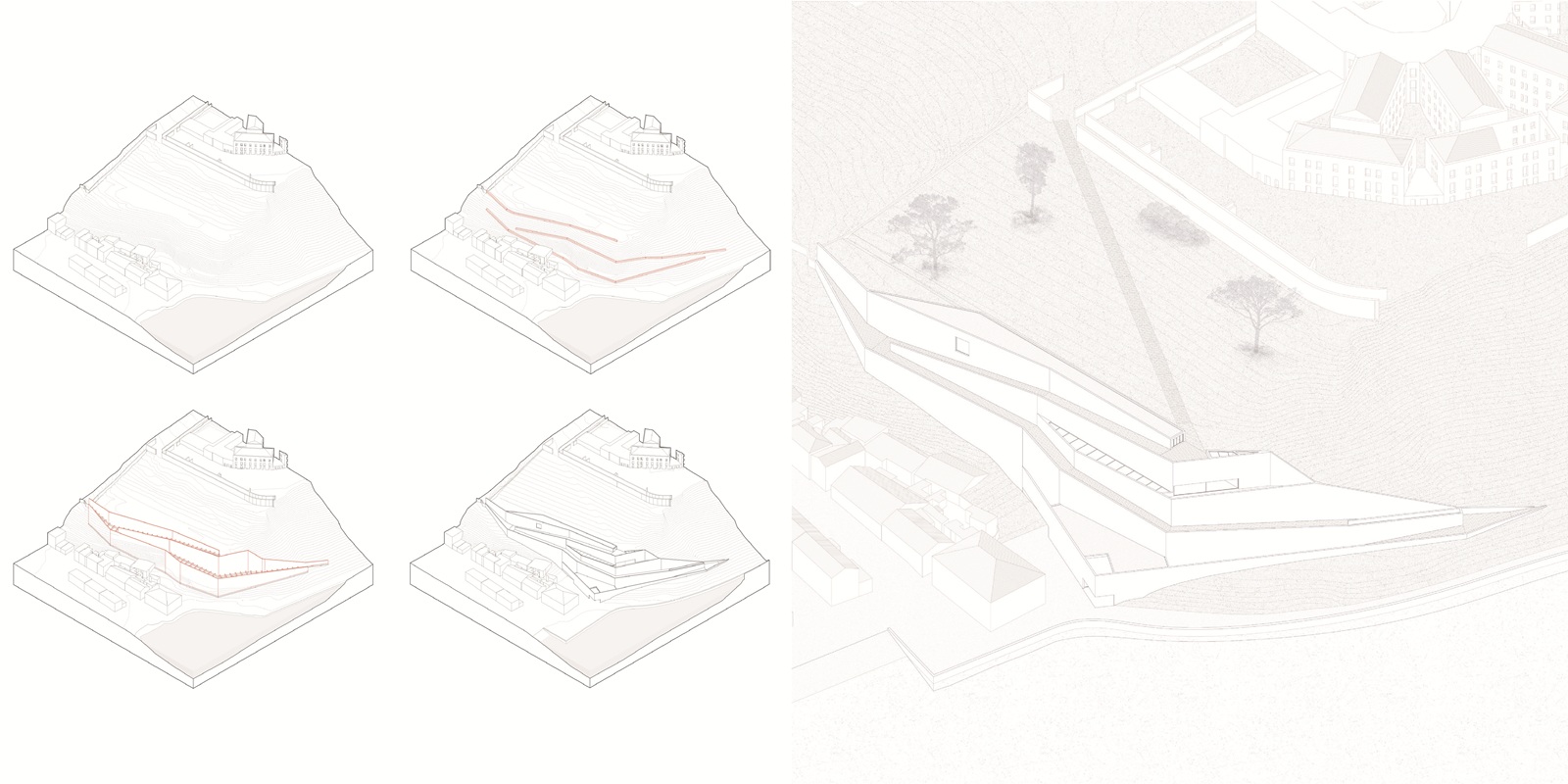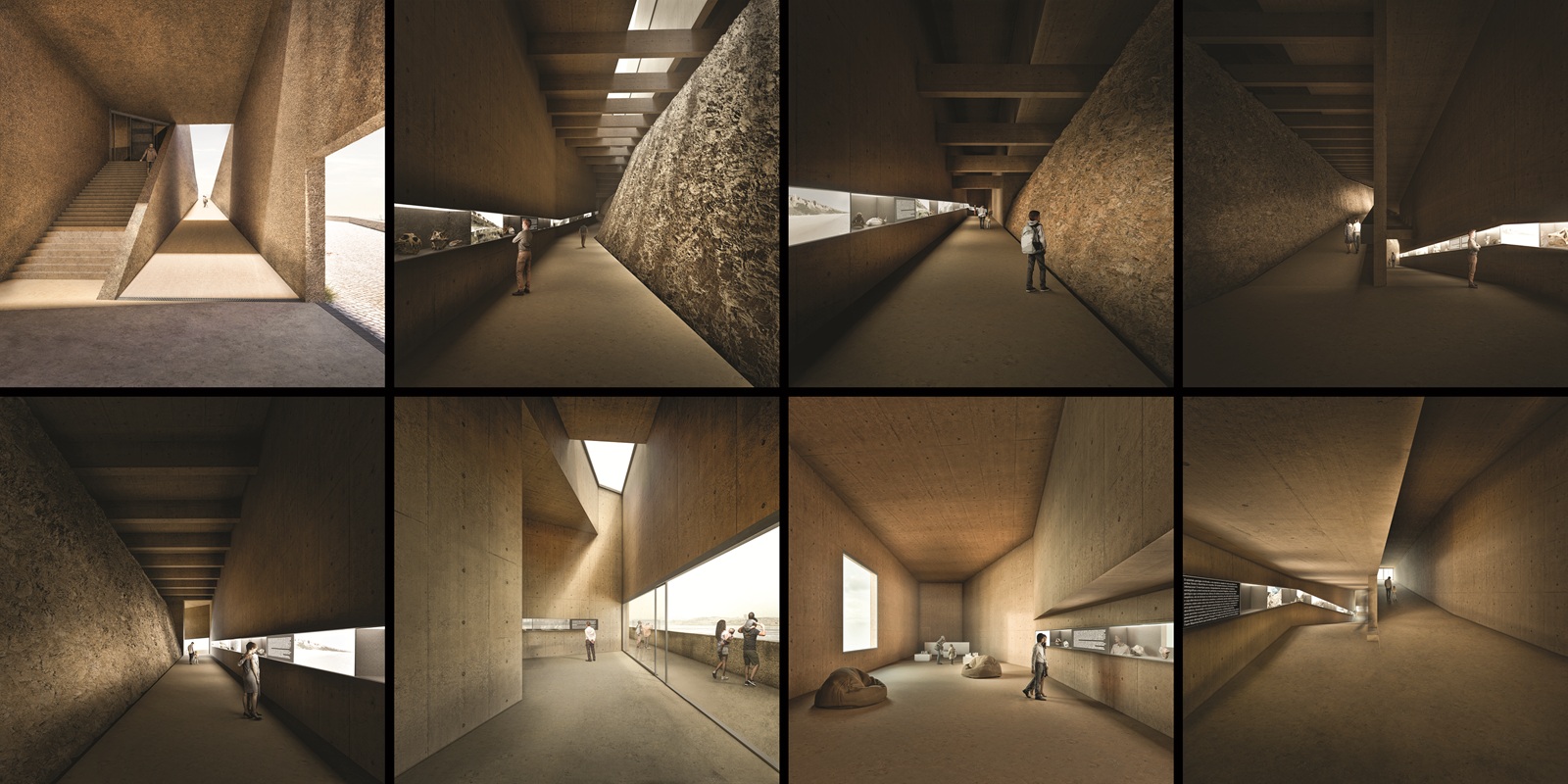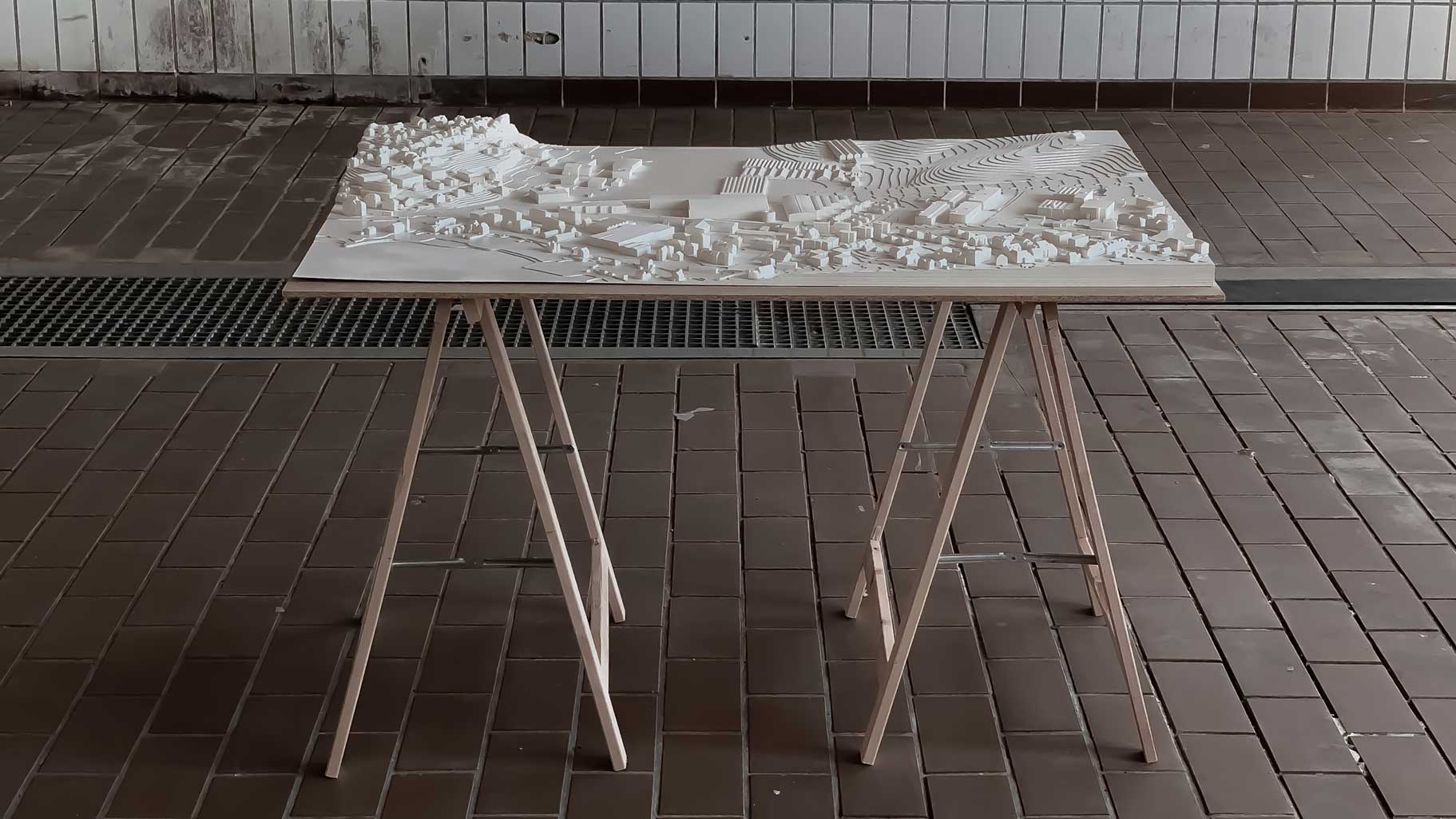
Projekt von
Michele Christoph Blaser
Begleitung
Walter Angonese
This project understands the need to re-establish access to landmarks and making them once again part of the village’s living memory. At the same time, the project addresses a broader territorial goal: creating continuity along the fragmented riverfront, making it more accessible and integrated into a metropolitan and cultural network. An unstable cliff with traces of past human interventions such as buttresses and retaining walls suggest a solution. The design introduces a new vertical connection, both infrastructural and architectural. This Project proposes architecture that is both new and ancient, rooted in the deep memory of the landscape. It transforms an obstacle into a journey, turning geological constraint into architectural potential. The path it creates is more than just physical access: it is a temporal bridge, connecting the present-day village to the prehistoric past and to a renewed future as part of a larger cultural network along the Tejo.









